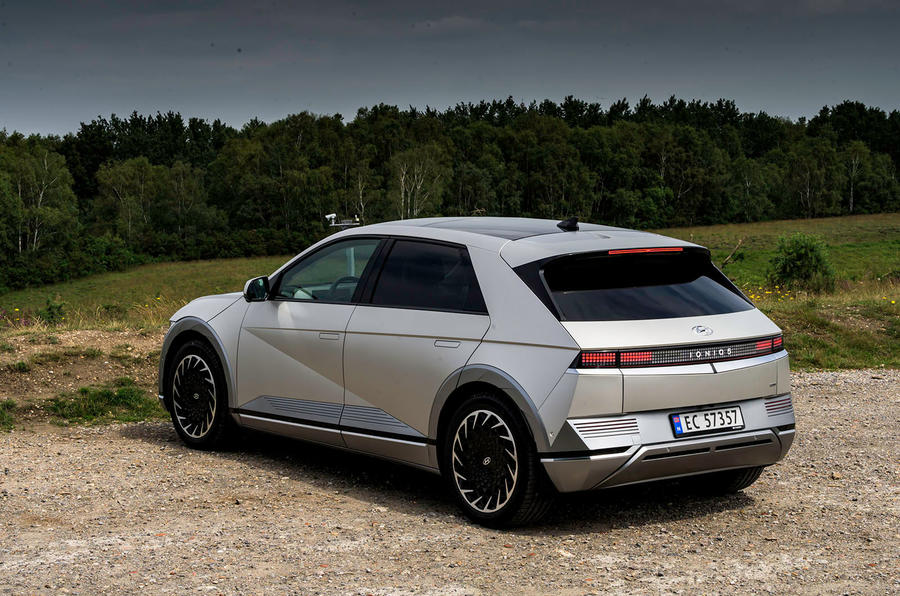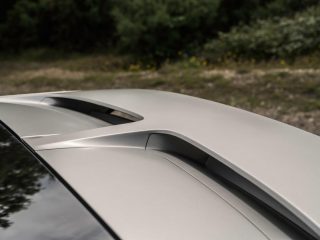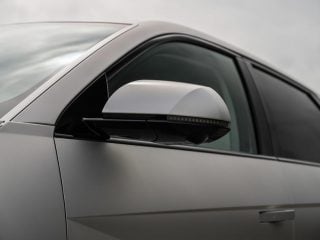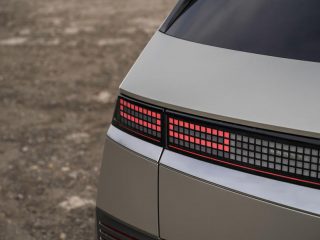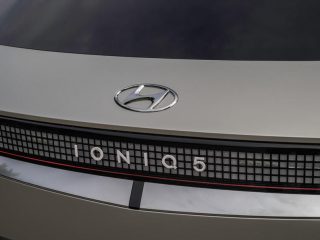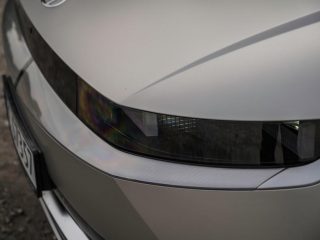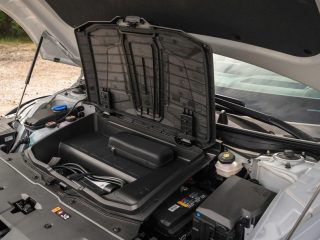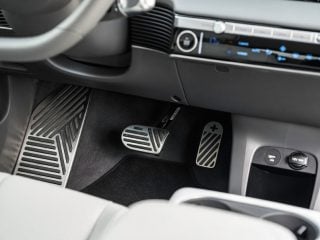We review the highest specification of Hyundai’s first dedicated electric car before it arrives in Australia.
Not constrained by needing to house a lump of metal in the front, ‘skateboard’ EV platforms give manufacturers the opportunity to approach car design in a wholly different way.
This has led some to fantasise about having classic shapes – like say, the Lancia Delta – riding on modern electric platforms. But who would have thought the revived Delta would come from Hyundai?
That’s not to say that the shape of the Ioniq 5 isn’t original. With the intricate graph-paper lights and the wild strakes and slashes down the side and around the wheelarches, it makes the original BMW Z4 look understated.
Mechanically, at least, it shouldn’t really surprise anyone that Hyundai has come up with a thoroughly engineered EV, as it managed to coax impressive efficiency and range out of the Kona Electric, and that was still based on an internal-combustion-engine platform.
The Electric Global Modular Platform (or E-GMP) is Hyundai’s new dedicated EV platform. It places the battery pack under the floor and the main motor at the rear, and it should unlock even more capability. The Ioniq 5 is just the first of many cars to use it, and it will soon be joined by its Kia sister, the EV6. A high-performance Ioniq 6 and a larger Ioniq 7 are also near certain.
The platform’s 800V architecture – something so far seen only on the Porsche Taycan and Audi E-tron GT – enables 350kW charging and an 80% top up in 18 minutes. If you can find a powerful enough charger, that is, since the expensive Ionity chargers are still not a patch on Tesla’s Supercharger network.
The Ioniq 5 offers a fairly comprehensive range of battery and motor combinations, starting with a 58kWh battery that’s always paired with a single 124kW motor. The larger (73kWh) battery can be had with rear-wheel drive and 160kW or with an additional front motor for a total of 224kW, as in the example we’ve tried.
Hyundai claims a range of 386km for the 48kW version, rising to 480km for the rear-driven 73kW car and 460km for the dual-motor one. It’s all very much in line with the Ford Mustang Mach-E and Volkswagen ID 4.
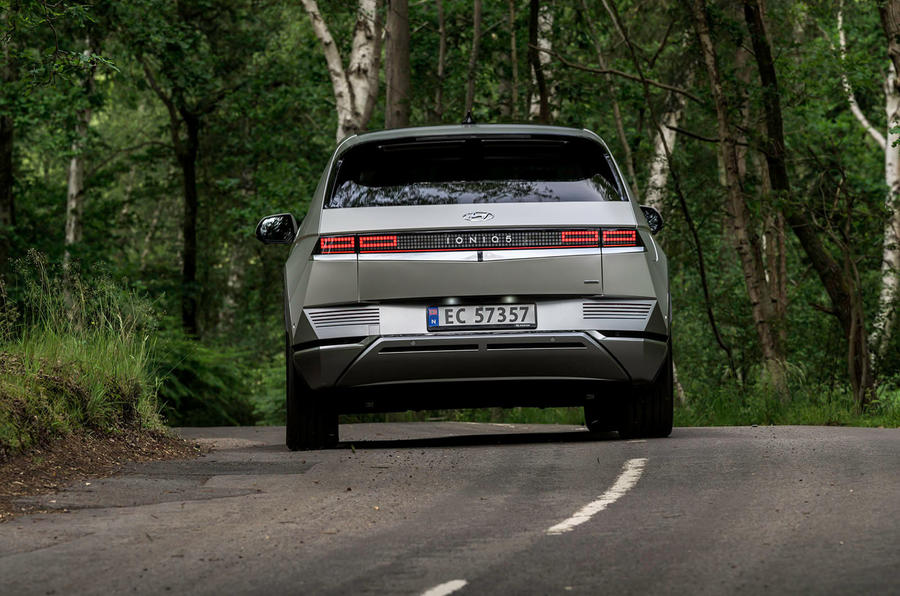
Isn’t it unfair to compare a hatchback with SUVs, though? Actually, something that doesn’t show well in photos is that this is a big car. At 4.6m long and nearly 1.9m wide without the mirrors, it’s longer than Hyundai’s Tucson and wider than its Santa Fe. Those wheels may look sensibly sized, but they’re really a massive 20in, with a meaty 45-aspect sidewall on the tyres as well.
The feeling of the Ioniq 5 not being what it looks like continues when you step inside. You sit high up, with the steering wheel slightly too far away than is ideal for tall drivers. No doubt helped by the white upholstery of our test car and the flat floor, the cabin feels airy, and it gives you a great view out.
The airiness is no illusion, either, as the Ioniq 5 is extremely spacious, with plenty of head room and space across the shoulders, while rear passengers can actually use the adjustable rear seats and stretch out.
The one downside of having batteries and motors under the floor is that the boot is quite shallow, although no more so than in the ID 4. The perfunctory ‘frunk’ makes little difference.
It’s a great place to be, with an original design, mostly high-quality materials (in this Ultimate-spec test car, at least). The very comfy (but optional) ‘premium’ seats have a laid-back lounge mode, with a leg rest that pops up to make waiting for your car to charge at least a more pleasant experience than spending your time in a nearby McDonalds.
The infotainment touchscreen works quickly and logically enough, and there’s a row of physical shortcut buttons and separate climate controls. Annoyingly, though, there’s no physical ‘home’ button and the heated seats and heated steering wheel require a couple of taps on the screen.
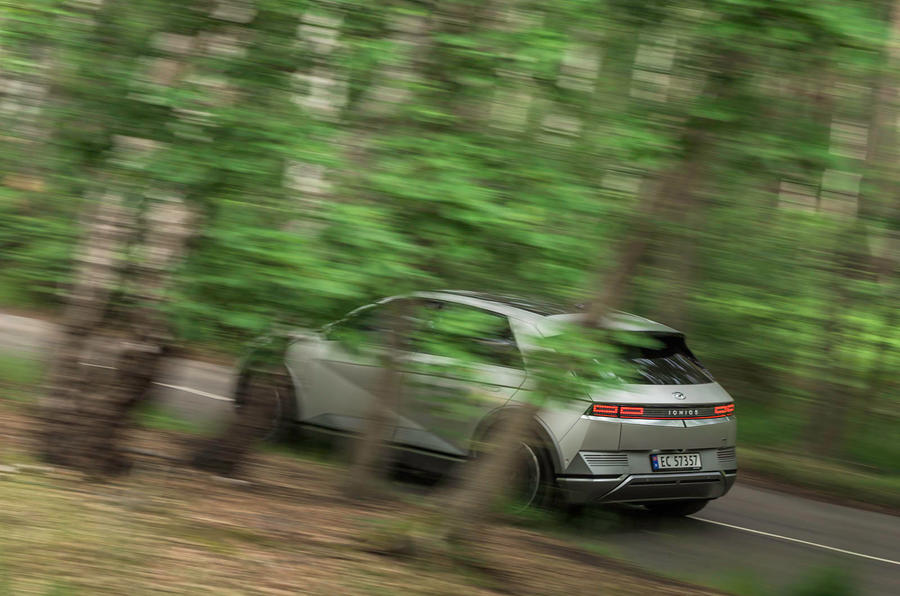
That the Ioniq 5 isn’t actually a sleek hatchback is by no means a bad thing, because it’s very much a comfy cruiser to drive. We drove a prototype that was very close to production spec a few months ago, and that must have been very close indeed, because some of the same reservations remain.
In general, the ride is impressively soft and comfortable, and potholes are adroitly dealt with. A touch more control wouldn’t go amiss, as the car can feel too floaty over some undulatins. The choice to make it resolutely comfortable is commendable, though.
It also means you shouldn’t go looking for any sportiness. There’s adequate grip and the steering has a reassuring and natural weight to it, but the response can be a touch unpredictable. The body rolls and particularly nasty ridges can make the car feel like a ship at sea when they’re taken too quickly.
However, take it easy and the Ioniq 5 offers a relaxed experience. It’s also very at home on the motorway, with good noise suppression and a reasonably clever adaptive cruise control as standard.
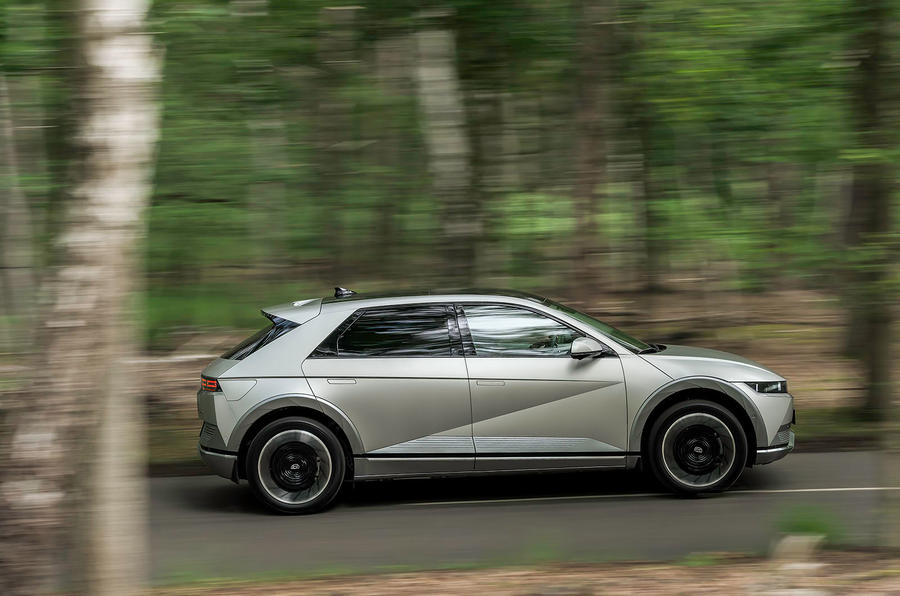
As these EVs tend to be, the Ioniq 5 is startlingly fast for something that’s positioned as a sensible family car, sprinting to 100kph in just 5.2sec with hardly any noise while imperceptibly managing traction. You would do well to detect any rear-bias in the drivetrain, but it does mean that torque-steer is pleasantly absent.
Doing that too often means you won’t see the claimed 460km range; we will do a range test when we get one for a week, but on our test day, the car showed a range of 341km and an energy consumption of 5.1km per kWh, which is competitive, if not ground-breaking.
The Ioniq 5 has a distinct character, both in its style and the way it chooses comfort over sharp dynamics, and pulls it off well. It won’t upend the electric SUV segment, but it’s a compelling option in a quickly developing class.
What’s perhaps even more significant than the Ioniq 5 in itself is that it will spawn a whole range of competitive cars from Kia and Hyundai and possibly also Genesis.
Illya Verpraet
